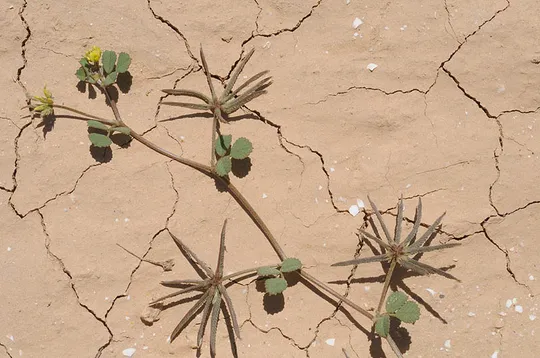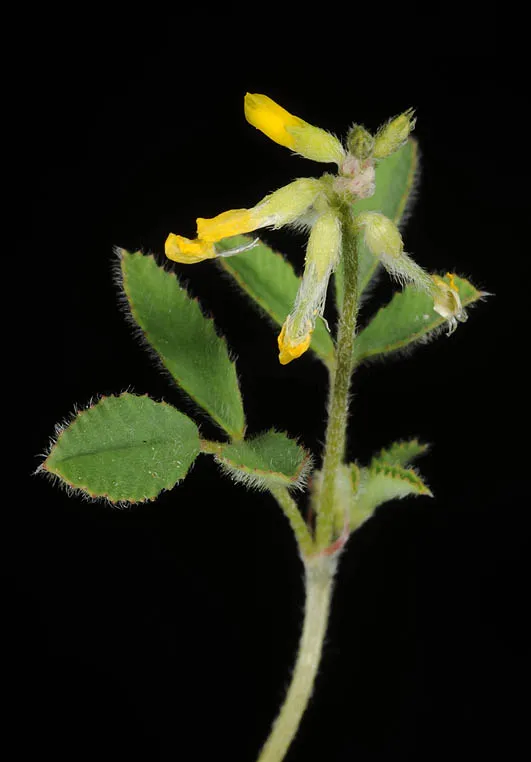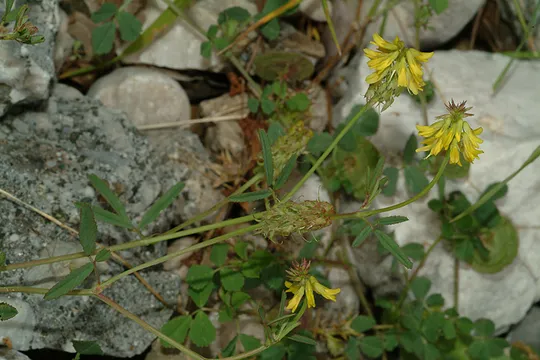Single-flowered Medick
Medicago monantha
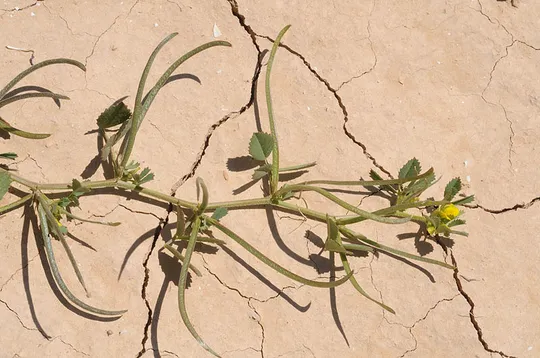

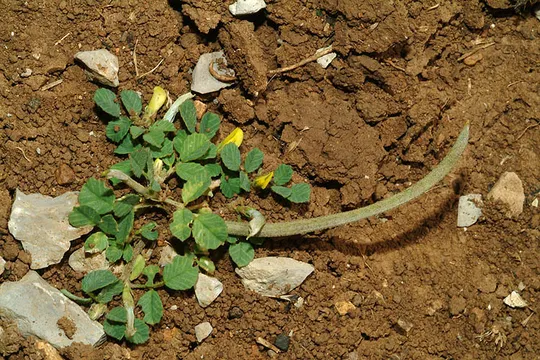
Trigonella monantha grows in only two regions in Israel and it is very rare in both of
them. In the Negev Highlands, it grows in the area of the Lots Cisterns and it has been recently discovered on the Ma'on Ridge in
the southern Judean Mountains (Oz
Golan, 2006). The species, however, is common in the montane zone on
Mt. Hermon at altitudes of
(1,100) 1,380 to (1800) 1970 meters. It is more common in Jordan, where it has been recorded from Ammon, Moab and Edom. In Edom, it is a
common plant in the sub-Tragacanth zone in
the Sharah Mountains at altitudes
of 1,300-1,700 meters, where it accompanies Astragalus
cruentiflorus and Artemisia sieberi.
Slopes on sunny steppes and in mountainous semi-steppe forests on shallow soil that dries rapidly in the spring. High mountains or continental highlands usually covered with snow in the winter, for at least several days to weeks.
According to the Flora Palaestina (1972) the genus Trigonella includes
about 130 species, but only 50 species according to more recent literature
(Mabberley, 1997). This difference reflects both the progress of research and the
taxonomic boundary change between the genera Medicago and Trigonella: many species of Trigonella were
transferred to the genus Medicago. The center of the genus is in the
Mediterranean region, and the largest number of species grows in Turkey – 47
species. Many species grow in the Middle East and penetrate to Central Asia.
Most of the species are annuals.
The genus Trigonella
is very close to the genus Medicago and various researchers transferred
species of Trigonella to the genus
Medicago and vice versa. Recently the entire Bucerates section of Trigonella was
transferred (Sec. Bucerates) to the genus Medicago, but we do not agree
with this (see the synonyms in the identity card above). The Medicago species have an
"explosion mechanism" in the flower when a bee visits it, a mechanism
that is missing in Trigonella. In addition, the
fruit in Medicago is usually coiled like a snail whereas Trigonella has
an elongated pod.
In Trigonella
monantha we distinguish between two subspecies, mainly by the
shape of the fruit: the subspecies noeana has a falcate shape, its tip
is not hooked, and it has a single fruit; in the subspecies monantha
the fruit is hooked at one end and the fruits (and accordingly also the
flowers) appear in pairs. These sub-species
were previously considered as independent species (e.g., the Feinbrun and Danin
guide, 1991), with the monantha subspecies growing on the Hermon, in
Ammon and in Moab, and the noeana subspecies also growing in the Negev
Highlands. On the Jordan plateaus, the two subspecies are found together. The species were combined, as in
Turkey intermediate forms were found.
·
Trigonella monantha grows in only two sites, and both have very few individuals.
·
One site is included in the Negev Highlands Reserve; however, there is extensive IDF activity in
the area as well as intensive grazing by wild asses. The Ma'on Ridge site was only discovered in 2004 and there are probably other
sites in this area.
A taxonomic study to compare the relations between the two
Trigonella monantha subspecies (noeana
and monantha in the Levant) should be conducted. Perhaps in
our region there
is a “terminal
splitting" (Wulff 1950, Stebbins 1974) and these are valid independent species, which
could be relevant for the status of the Negev Highlands population.
Field surveys should be
conducted to
locate populations of T. monantha in the Negev Highlands and on the
Ma'on Ridge.
Two of these populations should be enclosed and monitored demographically.
Grows in
most Middle Eastern countries, with the exception of
the Arabian Peninsula: Turkey, Lebanon, Israel, Jordan, Syria, northern Iraq, Iran, and Trans-Caucasus. The sub-species noeana continues east to Afghanistan and Turkmenistan.
Trigonella monantha is a short annual plant, extremely rare in Israel, but relatively common on
Mount Hermon and the Jordan plateaus. It is one of the
important examples of Irano-Turanian plants of high steppes, which are
common in the Fertile Crescent area, adjacent to Israel. In Israel, they
are extremely rare and highly endangered. A large number of such species
populates the Negev Highlands.
Current Occupancy Map
| 1000 squre meter pixel | 5000 squre meter pixel | 10000 squre meter pixel | |
|---|---|---|---|
| number of observations | 0 | 0 | 0 |
| in total pixels | 0 | 0 | 0 |
| Family | Fabaceae |
| Classification | On the extremely rare species list |
| Ecosystem | High Semi-Steppe |
| Chorotype | Irano-Turanian |
| Conservation Site | Lots Cisterns |
| Rarity |
1
2
6
|
|---|---|
| Vulnerability |
0
0
4
|
| Attractiveness |
0
0
4
|
| Endemism |
0
0
4
|
| Red number |
1
1.6
10
|
| Peripherality | N |
| IUCN category | DD EW EX LC CR EN VU NT |
| Threat Definition according to the red book | Vulnerable |
 Based on:
Based on:
